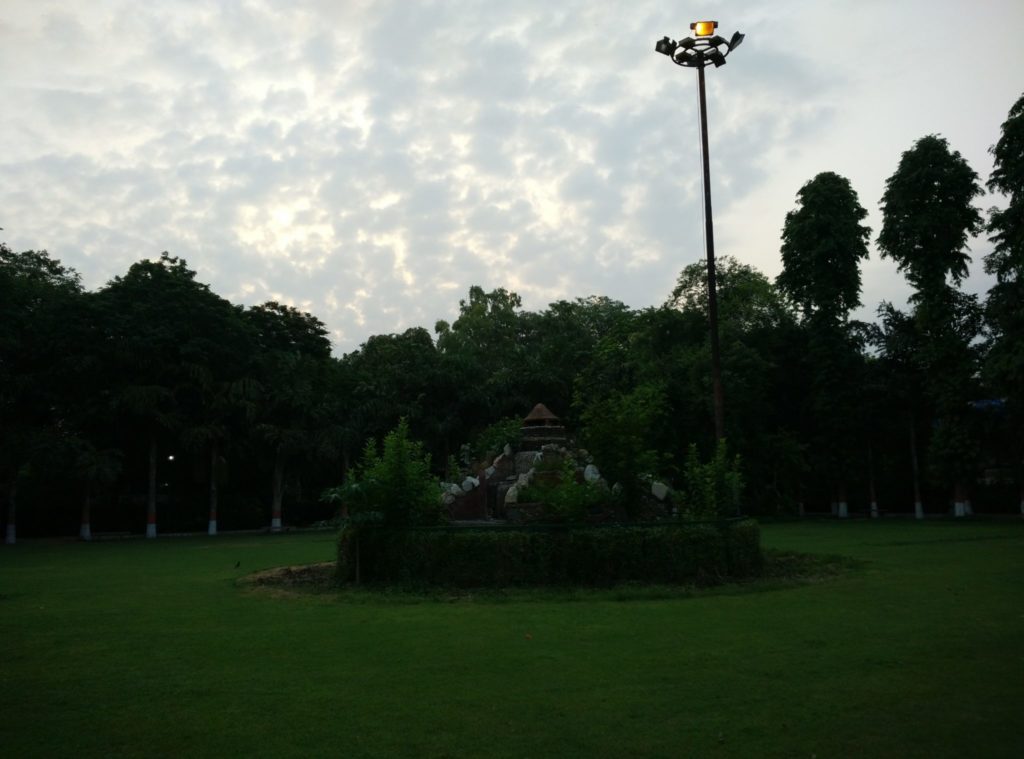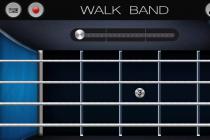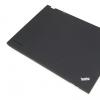If you've ever seen dynamic rich photos with strong shadows, skies or fine details. All these photos were taken with HDR. Now, in any Xiaomi smartphone, the camera supports this mode. Now, dear readers, let's take a closer look at what HDR is and how it works.
What is in-camera HDR?
HDR is a software algorithm used to process digital photography, the principle of which is to add dynamic changes to the photo. If you have a Xiaomi device and want to learn how to take high-quality and dynamic pictures, then you need to understand what HDR is in a Xiaomi phone camera.
What does HDR mode mean?
But this is not the case yet. With the lack of content so far and the high cost of a suitable device, it might be better to wait a bit - knowing that the acronym is here to stay and that you'll probably embrace it at some point. Only then was it possible to obtain a photograph with all the details that the range of illumination allows.
When to use HDR mode
Photos that have this feature have high contrast, which means that areas with the lightest don't get pale and transparent, and the dark ones aren't that hidden. This is why it took a lot of work in the early days of these images to combine the various negatives.
So, when using HDR, the smartphone's camera takes not one, but several pictures at once. At the same time, each photo uses a different exposure. After that, the software algorithm combines the resulting images into one photo.

A photo taken with this method renders light transitions much better, making them as similar as possible to what the human eye sees, and not the device's camera. It is also worth noting that when shooting with this method, the phone takes more time to process the image. For example, the Xiaomi Mi A1 camera takes 2 seconds to process the result.
In fact, most smartphones already come with this feature built into the cell phone camera. It is important to know when to use this feature and whether you need to activate it directly or not, so let's give some tips on this: First of all, it is worth remembering that human vision is better and superior to any camera and mobile phone even if it is the most modern in history. A person can recognize most dynamic range and digital cameras have limitations in this regard.
This is why in some of the photographs taken with these cameras, the most illuminated areas are completely white, while the dark areas become black. This will depend on your digital camera's exposure settings. It is with him that it becomes possible to photograph, leaving the image more natural, reminiscent of the image that we see with our own eyes.

What is HDR shooting?
HDR technology is designed to improve the quality of your photos. However, using this method of shooting is not always worth it, but only in certain situations.
So, first of all, HDR should be used when shooting landscapes, since in such photos it is very important to note the contrast between the earth and the sky. In the mode HDR camera Smartphone can easily cope with this task, highlighting all the details in the sky, while not darkening the earth too much.
However, this feature does not apply to all photos. Be aware of situations in which this mode is not recommended. For example, when there is too much light and shadow in one scene, or when capturing an image with very strong light, or when the main subject of the scene is in shadow. When you use this mode unnecessarily, the camera can significantly reduce contrast and natural shadows, which leave an artificial image.
What is HDR mode
Therefore, it is also important that you remain as quiet as possible when starting up the camera. Prefer to use this mode when you are taking a photo that does not require agility and speed to capture a certain moment, as there is a timeout before you can take another image on your smartphone. This is due to the fact that software the camera processes images taken before the final file was saved. So when you take sequential shots, don't turn it on.


HDR is also highly recommended for portraits in bright sunlight. Everyone knows that lighting is one of the most important aspects of photography. However, if a large amount of light falls on the face of the person being photographed, this can cause unnecessary shadows, glare, and other things that will not affect the quality of the photo in the best way. Using HDR, you can easily adjust the amount of light on your face.
How to enable work on different smartphones?
Some mobile models expand the dynamic range a little, others increase it significantly. We recommend that you use some test-enabled images to see how your smartphone is performing. Again, this will depend on the model and manufacturer of your mobile device but the camera settings are not hard to find.
Just press this button to activate or deactivate the function. If you do not find any options in the camera settings, download the app corresponding to the device. This function makes pictures taken with smartphones even more beautiful because it allows you to display the brightness of the environment in which the image is performed in a balanced way, which makes the photo not too dark or too light.
But, there are situations in which HDR is better do not use. For example, when shooting moving objects, as they will appear blurry in the photo. It is also not recommended to use this mode when shooting high-contrast scenes and when there are a lot of bright colors in the frame.
HDR mode in a smartphone what is it?
Do not forget that most smartphones Xiaomi, in which there is shooting a photo in HDR mode, take two images at once, one with HDR effect, the other without it. Thus, after shooting, you can compare both images and choose the best one.
Until recently, this feature was only available on the best digital cameras... It is now available to most cell phones... A device with this function captures three images of the same scene, and a different exposure level is used for each machine. At the end, the camera automatically merges the three shots you took at the same time while creating preset points for a sharper, final image.
The difference is that taking full advantage of this feature is that after capturing an image, your smartphone will remain stationary for a few more seconds while the function does its job. On the other hand, everyone who owns operating system on your smartphone, you will have to download an application that offers this feature. To do this, you need to check your camera settings.


Photography is an art in which it is always necessary to experiment to achieve the best result. Don't be afraid to take pictures and use the “mode HDR photo". Over time, you will learn how to use it correctly and significantly improve the quality of your photos.
These include general resolution, motion compensation, location marking, ghost removal, and more. Many photos have incredible details that can go unnoticed by our eyes or get lost because they don't have the right lighting in the photos.
What it is?
This method consists of displaying ideal lighting at all points of the photo, i.e. dark and clear areas of the image are equally appreciated. Nothing is underestimated - when the photo is dark or overexposed - the photo is too clear. Everything is displayed in the best lighting.
Consider the principles of work HDR functions and what it is in practice.
You will learn how to set the mode most efficiently and get perfect photos, even on a smartphone with average specifications.
That is why, in recent years, companies have been improving camera performance through pre-programmed “smart” modes.
This has to do with how the technique is performed: photographs of different exposures are merged, generating only one photograph with the best color and light details in all of them. Take a look at the example below. Notice how the photo has sharp, vibrant colors. In addition, sharpness shows how well all the elements are displayed well in the image.
In the example we are using, we are using three photos: one darker or underexposed, another ideal, and the last one lighter or overexposed. Please note that photographs have different lighting ratios. In addition, unwanted “ghosts” - blur caused by moving objects - may occur.
The built-in camera options, which users often do not pay attention to, will significantly improve the quality of shooting.
HDR is one such function. Let's take a closer look at how it works and how to take high-quality pictures with it.
Content:
What it is?
In fact, it is a built-in option that allows you to adjust the high dynamic range. Activation allows the camera to take quick and consistent shots.
The choice of the number of images is very much related to the taste of the photographer, because the more photos you use, the more contrasting and detailed the result will be. In addition, the greater the distance between the exposure points in the photometer, the brighter and more intense the last photo will be.
When pinning all images, the photographer must combine them and create. The renowned image editing software has this feature, which is easy to use with great results. The most recommended lenses for landscape photos and large amplitudes are wide-angle lenses.
The algorithm then automatically assigns a different shutter speed and exposure to each frame.
All further frames will be combined into one image to achieve best effect shooting.
The hardware principle of DHR operation is in autofocus operation, which alternately focuses on several areas of the frame with different levels of illumination.
You can find out more about wide angle lenses by clicking here. This function automatically generates three photos, planning the number and different exposures. The camera shots are organized and avoid the risk of different scenarios between photos. Enter the menu and select the second camera, which symbolizes the photo settings.
You automatically set the exposure of your photos when using a tape measure; a second meter will appear indicating the difference between the photos. When adjusting the exposure of photos, click "set". Sample image below. 
The camera will shoot three times with three different exposures.
In a broad sense Is the technology of the future that delivers the best color and depth. The user can find such a mode not only in the smartphone camera settings, but also in professional cameras, video editing software, games and LCD displays.
Why is the function good for smartphones?
For phones and tablets, it allows you to achieve improved picture detail, determine the appropriate level of contrast and clarity for a frame or video.
You have three images with different exposures ready to be combined. Now just let go of creativity and take beautiful images. Before shooting, you can adjust the settings to get the best picture for your situation. If you pick yourself up, tap. Tap and select 3 seconds or 10 seconds. Hand out your shot, and when you're ready, tap to start the countdown. Put yourself on the picture and smile!
Using the Flash Tap the screen to set the flash mode. Slide the viewfinder to the right to view the settings. Use location tags. When capturing photos or videos, you can insert the capture location data.
For example, in the usual version of shooting, objects with different chromaticity and level of distance from are always included in the frame.
Only some of the detected objects will be in focus of the camera, so it is better to use HDR.
High dynamic range allows you to focus on each subject.
Sharpness settings are saved, as a result you get a high-quality picture.
Slide the viewfinder to the right to view settings and enable Save Location. Capture a photo of a vibrant scene that also includes dark shadows? The camera captures multiple exposure levels and combines them into a single photograph, providing vivid color and detail in both light and dark areas.
Its front camera includes a filter to make everything even more beautiful. Smooth and smooth skin tone - removes blemishes and blemishes - cleans teeth - Reflects the T-zone - Small face - Enlarges and brightens the eyes. Make sure you are using the front camera. Do one of the following: - Tap to use auto mode... -Also use manual mode, then adjust the intensity of the filter.
It is better to use the mode if the shooting is carried out from a tripod (that is, absolutely still), because it is in this state that the phone captures several frames better and compares them to obtain the resulting image.
Smile and tap to take a photo. To turn off the filter, tap or, and change. Lower resolution photos and videos take up less space but have lower image quality. Turns the shutter on and off. To take shots with depth enabled.
You must be two meters from the object. It is recommended that there is nothing between you and the subject and that it is highlighted. Create your photo and tap. indicates that you can edit these photos to change the color, background, and focus.
Choose one of the following. Selective Focus: Tap a layer to use focus and blur on the rest of the photo. Replace Background: Tap the foreground layer to remove and use the background. You can also ask for our help.

Advantages and disadvantages
Minuses:
- There is no way to shoot objects that are moving. Since the camera in HDR mode shoots multiple frames at intervals of milliseconds, capturing a moving subject will fail. The final picture will be blurry, not focused;
- Problems getting a bright shot. Different frame rates do not allow obtaining maximum brightness values. Normal shooting options produce a bright picture, while the option gives priority to the background and the central subject in the picture;
- The shooting process slows down. Working with multiple frames for one image will slow down even the fastest cameras. If every second counts to create a photo or doesn't process commands quickly enough, it won't be the right option for the job.

To get a big picture. As with photography, in which we enlarge and gradually reveal the pixels that make up it, the extended video image degrades the quality. By increasing the number of pixels, it gains grace. Hence the possibility of its expansion.
Neither true nor false. The ultra-high definition image does not fatigue the view. This is much less than for a classic screen. Through it, you will learn what ultra-definition can give you. Not right. We even talk about “non-existent content”. This is also wrong.
Settings interface - we select the parameters correctly
It should be noted that HDR is not only about the camera's shooting mode. Many have come across this acronym in the form of video formats that smart TVs or regular computers play.
Let's take a closer look at what it is and how it differs from standard formats.
Some mention a deadline. We can be pessimistic. First, because the producers will primarily serve us seen and reviewed by blockbusters. Then, because the first names are likely to be expensive. Therefore, see more details for more details. But then again, manufacturers come very early.
This is part of their standard. At the moment, these are declarations of intent. There remains a real trend that will nevertheless require a fiber connection in order to enjoy. We can also expect prices to decline in a few months. It's good that this is the topic of this tutorial.
You can understand the value of this indicator for video files using the example of how an image from the real world enters our screens, creating a standard SDR (standard dynamic range).
Traditionally, the process takes place in the following way :
1 The visible image of the real world that has a very wide range of brightness, modern amateur and even powerful professional cameras cannot capture to the fullest. They cannot capture the entire range, but they recognize most of it;
3 The next step is mastering(converting the video track to standard digital or analog signal that the technician can depict);
4 To fit the resulting wide signal gamut into the small standard gamut of the device, have to significantly thin out, compress and crop the original color... It turns out that although they give an impressive increase in the clarity of the picture, there is almost no dynamic range of the picture.
Modern TVs, which are able to display the picture in much larger boundaries, automatically try to enrich and embellish the standard signal.
However, the desired effect is not always achieved, which is why conventional SDR does not have that unique color depth and exposure.

Unlike the standard range, HDR sets new luminance spaces for video. As a result, after capturing the camera and post-production, the video retains the maximum exposure settings and in the future it can be transferred without any problems for playback on different devices... The quality will be maintained regardless of where the video is played.
The mode supports a range of up to 10,000 nit ( while normal SDR only supports 100 nit ), and 4K video can only output a range of 500-800 nit.
By the way, displays that would support all 10,000 nit have not yet been invented, which gives the mode the opportunity to be widely used in the future.

Fig. 6. - scheme for providing high dynamic range
Side-by-side comparison of the two modes:

Fig. 7. - comparison of two options














